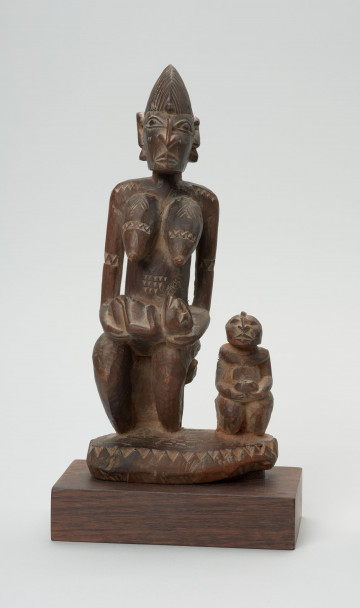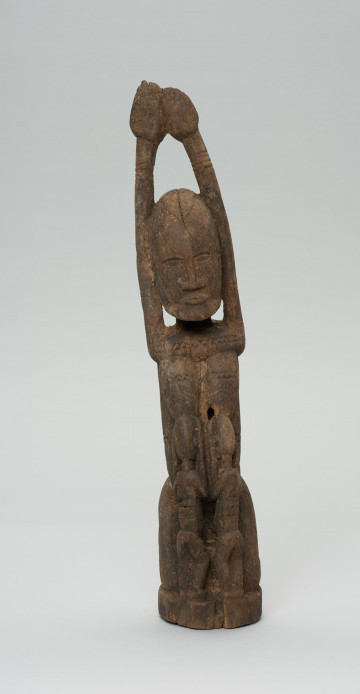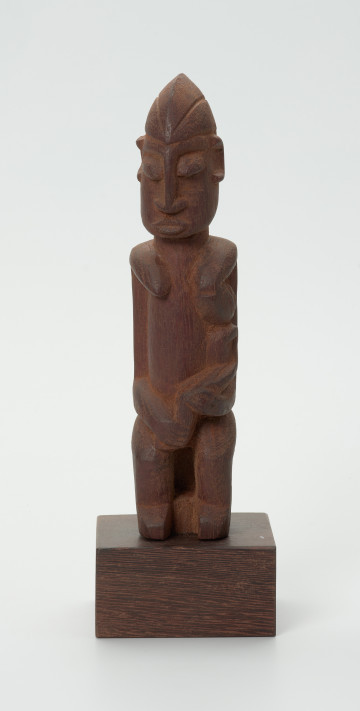
Figure - woman with child
między 1951 — 2000
National Museum in Szczecin
Part of the collection: Collection of Dogonian art
Woman and child is a popular representation symbolically alluding to maternal love and female fertility, which is highly valued in Africa. The birth of a child is a great event for a woman and her family. The child is a blessing, a testimony to the good behaviour of the parents (especially the mother), in accordance with social rules. Each Dogon child is given three names, given by different people and used in different circumstances. The first one, called boy toy, is assigned to the child a few days after birth. It is done by the head of the great family (ginna bana) on the father's side. Boy toy is the official name that the child and those around him will use most often. A few days later ginna bana on the mother's side gives the new member of the family another name - boy na. He will be referred to by his mother's relatives by this name. The heads of both families, when giving a child a name, usually choose one that has already appeared in their families. The choice of name is also determined by gender (male names usually begin with the letter a, while female names with the prefix ya) and the order of birth in the family. The third name (boy dama) is given to the child 35 days after birth by the priest of the Binu (Binukedine) cult - the first ancestor of the father's family. It is a ritual name, a secret name used only by Binukedine during rituals. Nowadays, in the era of advancing Islam and the presence of Christianity in West Africa, it is common to find Muslim and Christian names. They are used when registering children in offices, but nevertheless every Dogon also always has a traditional boy toy name. French anthropologists conducting research among the Dogon in the 1930s collected as many as 797 names of this type.
Ewa Prądzyńska
Author / creator
Dimensions
cały obiekt: height: 62 cm, width: 8 cm
Object type
sculpture
Creation time / dating
Creation / finding place
Identification number
Location / status

między 1951 — 2000
National Museum in Szczecin

między 1951 — 2000
National Museum in Szczecin

między 1951 — 2000
National Museum in Szczecin
DISCOVER this TOPIC
National Museum in Lublin
DISCOVER this PATH
Educational path